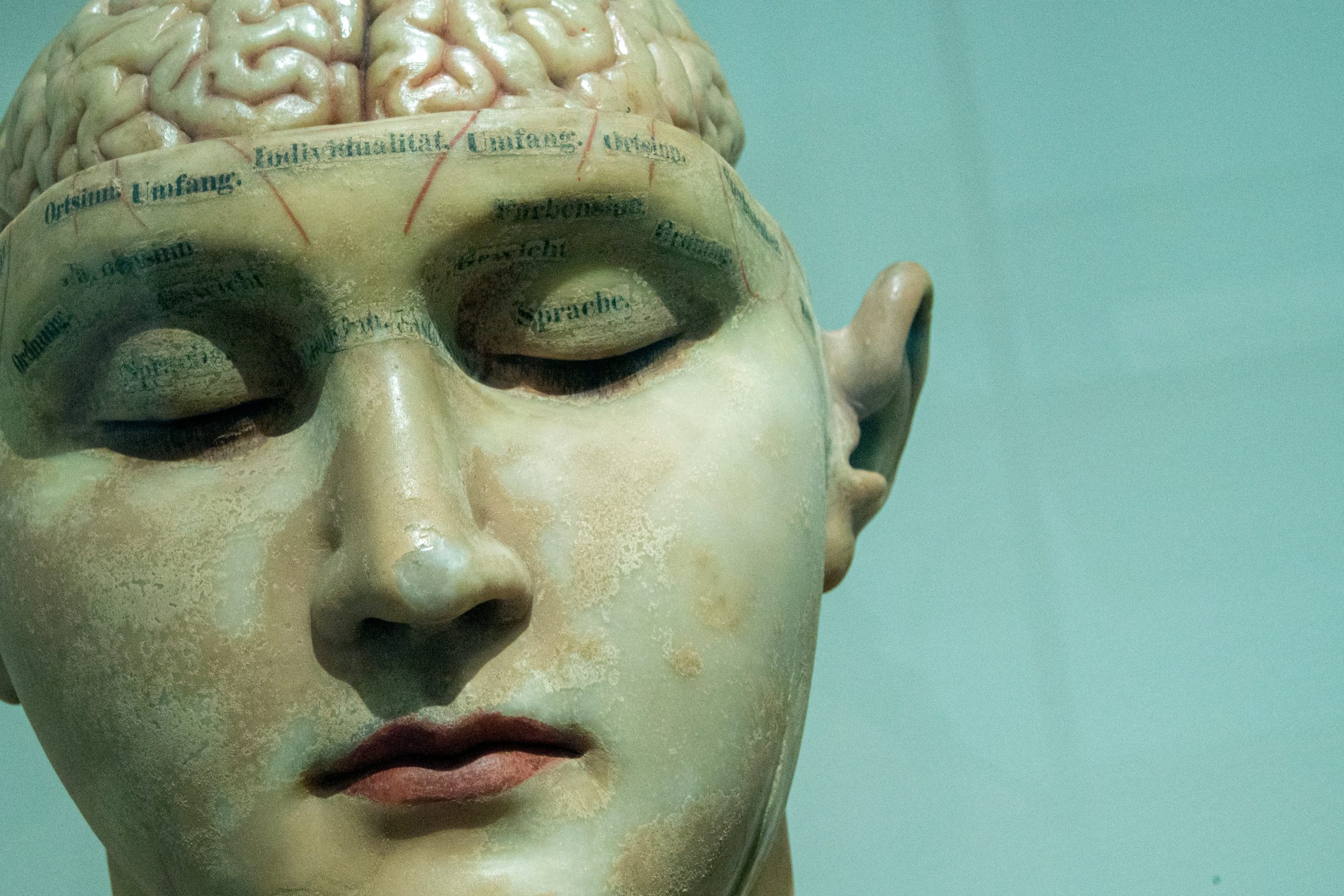When power is given to people like Elon Musk, will brain-computer interfaces do more harm or good? Photo credit: David Matos via Unsplash
Brain-computer interfaces (BCIs) record, translate, and interpret brain signals generated by neuronal activity. These messages are then sent to external devices, such as robotic limbs or a speech articulator. While they can’t yet replicate multiple nervous system functions, and can have substantial error rates, exciting advancements in BCIs are gaining significant attention in the research world and beyond. Yet, with this advancement in “mind-controlled” technology, discussion has arisen concerning where the line between treatment and human enhancement lies, and whether they are safe in the hands of “innovators” like Elon Musk.
Can’t botch a BCI: challenges of brain recordings
Recording brain signals is highly complex, as invasive and non-invasive recording methods both face a multitude of challenges. Implanted electrodes are of higher spatial and temporal resolution than non-invasive ones, providing greater precision to match a specific brain signal to a specific output. However, achieving consistent and safe recordings with invasive, implanted electrodes is also tricky. Avoiding gliosis, a type of scarring that can occur in the brain, and maintaining stability in recorded neural signals are two major challenges with implants. And, as with any surgery, the invasive procedure of implanting the electrodes is accompanied with the risk of infection.
…achieving consistent and safe recordings with invasive, implanted electrodes is also tricky.
Nevertheless, despite these limitations and risks, many phase I human trials are tackling these issues and are demonstrating very exciting potentials for BCIs.
The transformative power of BCIs
BCIs have the power to increase quality of life for individuals with a range of conditions. One potential use is helping paralyzed patients communicate. In a trial conducted at Stanford University in 2023, a patient who had lost speech ability was able to communicate through a speech articulator controlled by intracortical electrodes at a speed close to that of natural speech, an exciting advancement despite a limit in accuracy and usable vocabulary. BCIs are also not limited to use in paralysis patients. For example, non-invasive BCIs have shown potential for aiding post-stroke motor rehabilitation. Recordings from the brain hemisphere unaffected by stroke have been used to direct the movement of an affected limb that is powered by an exoskeleton machine, which may help regenerate motor pathways by engaging the affected limb. This could help patients with restoring movement and control after stroke.
…non-invasive BCIs have shown potential for aiding post-stroke motor rehabilitation.
What does Elon Musk want from BCIs?
Most BCI research is focused on improving patient wellbeing and identifying new treatment options. However, one “innovator” often thought to have ulterior motives may come to mind: Elon Musk. His billion-dollar company, Neuralink, announced on the 21st of August that their second clinical trial participant had received a Neuralink BCI implant. These current implants are used to control computers, directed by brain signals of participants.
…‘unlocking human potential’ has the capacity to surpass the usual medical realm.
Neuralink’s stated mission is to ‘create a generalised brain interface to restore autonomy to those with unmet medical needs today and unlock human potential tomorrow’. While this may not sound too bad, the second aim of ‘unlocking human potential’ has the capacity to surpass the usual medical realm. Musk has also stated that the sci-fi novels of The Culture series by Iain M. Banks inspired his investments into BCI development. Thus, when considering his hopes to have millions of people with Neuralink implants, we reach the question of whether Elon Musk’s Neuralink research is a step in the direction of mind control and human enhancement, or just an overhyped manifestation of existing research? Either way, his unconventional approach might be something to be wary of.
Musk’s motives aside, issues have been raised with Neuralink’s conduct of animal and human trials, in addition their lack of transparency. In a 2022 Reuters review that assessed complaints made by Neuralink’s past and current employees, there were reports of rushed experiments leading to excessive animal deaths, with pressure from Musk at the heart of the problem. Despite multiple complaints, the only violation of the Animal Welfare Act occurred in 2019. This was confirmed by a U.S. Department of Agriculture (USDA) secretary, prompted by the Physicians Committee for Responsible Medicine (PRCM) obtaining concerning internal records of animal experiments ran by Neuralink at the University of California, Davis (UC Davis). These records had evidence of the use of unapproved ‘BioGlue’ when implanting electrodes, paralysis in a monkey where BioGlue was compressing a brain region, and extensive symptoms of depression in animals. However, this was not treated as a violation of the law due to a protective agency policy. Though this policy has since been put out of use, it protected the company against the serious complaints made up to that point.
….pressure from Musk at the heart of the problem.
Considering issues raised with preclinical trials, it could be questioned if the company were truly ready to proceed with their first human patient. Nonetheless, the FDA approved their first human clinical trial: starting with the patient Noland Arbaugh. There is no anonymity for their clinical trial patients; Noland Arbaugh’s direct reports of his experience have led Neuralink’s success stories. He has praised the technology which allows him to use a computer and play online chess, an independent activity he enjoys that paralysis had previously made difficult. Despite this positive news, in May there were reports of threads moving and detracting from targeted brain regions in Arbaugh’s brain, but with limited other details in the blog post announcing this.
Noland Arbaugh’s direct reports of his experience have led Neuralink’s success stories.
This is not to say that they were unsuccessful – in the case of Arbaugh no threats to his health have been reported so far. Thus, it is possible that with a few adjustments the Neuralink technology could become highly valuable. However, evaluating the pros and cons of Neuralink’s technology is difficult because of the lack of publicised trial data, and little understanding of how accessible this technology would be if licensed.
Could BCIs be used for human enhancement?
It is unclear how Musk’s aim to use BCI technology to ‘unlock human potential’ could be achieved. Some current suggestions on how BCIs could be used for human enhancement include increasing the number of tasks one can undertake at one time and altering brain signals with BCI feedback mechanisms to improve brain function.
An experiment from the Hiroshi Ishiguro Laboratory in Japan used BCIs to increase healthy participant’s multitasking capabilities where participants controlled a robotic arm to grasp a bottle through the BCI while simultaneously using both their own arms to balance a ball on a board. Half of the participants managed, demonstrating the potential to ‘extend physical capabilities’ with this technology.
Neurofeedback is another application of BCI technology, which involves humans and controlling their own brain waves through instruction. This process has potential for treatments of psychiatric and motor disorders but is not restricted to purely medical conditions. It is being investigated whether neurofeedback could be used to improve memory or for other cognitive enhancements, but with minimal success so far.
So, ‘human enhancement’ with BCIs in the future might be possible, but the extent of their exact capabilities remains unknown. Moreover, if research goes down this road, one must question Elon Musk’s intentions as a part of it. He is a man who has been known to fuel hate and who, based on his reputation, could be more interested in a sci-fi future than a safe one. So, while developments in BCIs may have positive and life-changing impacts, concerns could arise if he is at the forefront of them.





